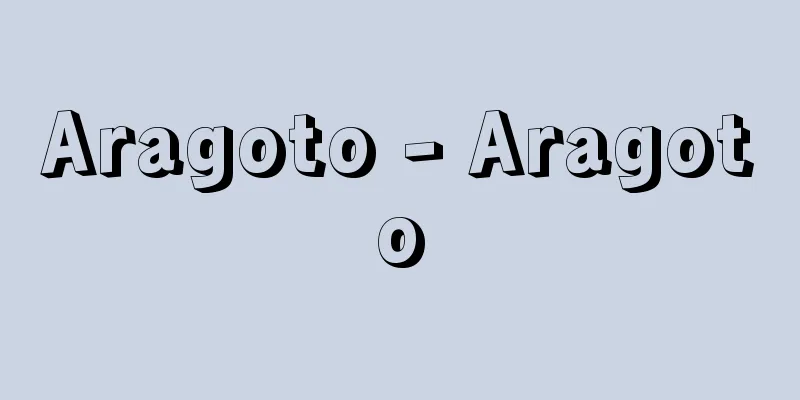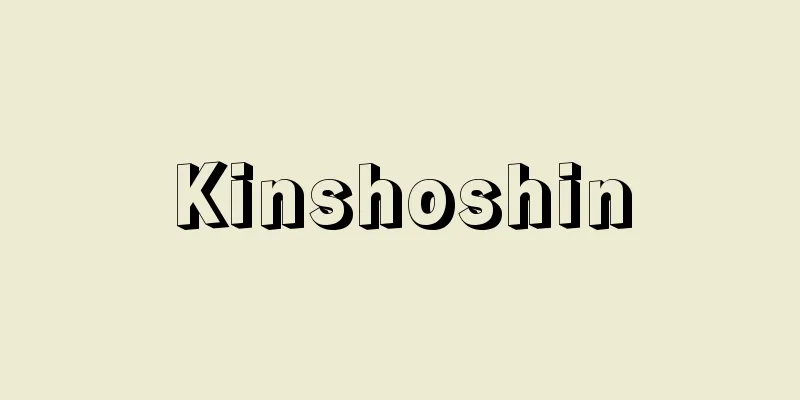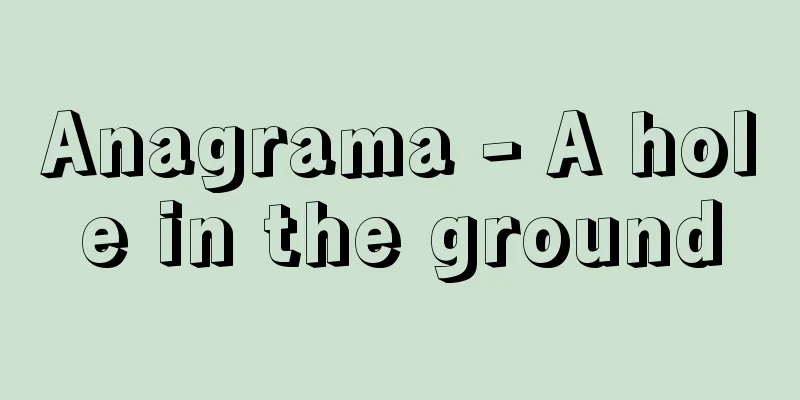Aragoto - Aragoto

|
Kabuki is a unique style of acting and directing. To express the superhuman strength of heroes, gods, Buddhas, demons, etc., the face, hands, and feet are made dark, and wigs, costumes, props, movements, vocalizations, etc. are all stylized. It is commonly believed that Ichikawa Danjūrō I was inspired by Kinpira Joruri, which was popular at the time, and first performed it in September 1673 (Enpo 1) at the Nakamuraza Theater in Edo in "Shitennou Osanadachi," but the basis for this is thought to be the rough acting of samurai, dandy men, slaves, and enemies, which were often seen in early Kabuki. However, the origin of the word "aragoto" is said to be not only the word "rough" but also "areru" meaning the appearance of a god, and this became clearer as it was passed down as the "family art" of the most famous Edo Kabuki family, Danjūrō, and became established as a distinctive feature of Edo Kabuki. This performance is used in almost all of the "Kabuki Juhachiban" plays, including "Shibaraku" and "Yanone," and is also used for many other roles, such as Watonai in "Kokusenya Kassen," Umeomaru and Matsuomaru in "Sugawara" (Kurumabiki), Tadanobu in "Senbonzakura" (Toriimae), and Otokonosuke in "Sendaihagi" (Yukashita). [Toshiaki Matsui] Source: Shogakukan Encyclopedia Nipponica About Encyclopedia Nipponica Information | Legend |
|
歌舞伎(かぶき)独特の演技、演出法。豪傑、神仏、妖魔(ようま)などの超人的な強さを表現するために、顔や手足に隈取(くまどり)をし、鬘(かつら)、衣装、小道具、動作、発声など、すべて様式的に表現する。通説では、初世市川団十郎が当時流行した金平浄瑠璃(きんぴらじょうるり)にヒントを得て、1673年(延宝1)9月江戸・中村座上演の『四天王稚立(してんのうおさなだち)』で初めて演じたといわれるが、その土台には、初期の歌舞伎に多くみられた武士、男伊達(おとこだて)、奴(やっこ)、敵(かたき)役などが演じる荒々しい演技があったと考えられる。ただ「荒事」の語源には、単に荒っぽいという意味のほか、神が現れることを意味する「あれる」があるといわれ、それが江戸歌舞伎随一の名家団十郎の「家の芸」として継承されることによってますます明瞭(めいりょう)になり、江戸歌舞伎の特色として定着するようになったものである。その演出は『暫(しばらく)』『矢の根』をはじめ「歌舞伎十八番」のほとんど全演目に行われ、ほかにも『国性爺(こくせんや)合戦』の和藤内(わとうない)、『菅原(すがわら)』(車引(くるまびき))の梅王丸・松王丸、『千本桜(せんぼんざくら)』(鳥居前(とりいまえ))の忠信(ただのぶ)、『先代萩(せんだいはぎ)』(床下(ゆかした))の男之助(おとこのすけ)など、多くの役に用いられている。 [松井俊諭] 出典 小学館 日本大百科全書(ニッポニカ)日本大百科全書(ニッポニカ)について 情報 | 凡例 |
Recommend
Yellow Garden Clover - Yellow Garden Clover
... The genus Sisyrinchium (English name: blue-ey...
Enriched wheat flour - Kyokakomugiko
…Rice grains coated with B1 and B2 are mixed in a...
Begging - Gyōkotsu
〘Noun〙 (meaning to beg) A Buddhist term. One of th...
Active layer
...Then the temperature of the frozen soil drops,...
Weaving - Orimoto
〘 noun 〙 A textile manufacturer. A weaving shop. ※...
Lothringen
…A region in northeastern France, spanning the de...
Pseudoelasticity
...Because shape memory alloys have properties no...
Science Museum
In Japan, the Museum Act defines a science museum...
Hadal zone
In marine biology, the deep sea refers to a depth...
Quadi tribe
…In Britain, Scotland was abandoned, and Hadrian&...
Vacuum melting
A refining method in which metal materials are mel...
Toyohama [town] - Toyohama
This former town in Toyota County consists of sout...
Grape - Grapes
A deciduous vine of the Vitaceae family. There are...
Etsu (King) - Etsu
...They also played a part in the slave trade thr...
khaṭīb (English spelling) khatib
…In the radical faction of the Reformation, inclu...









